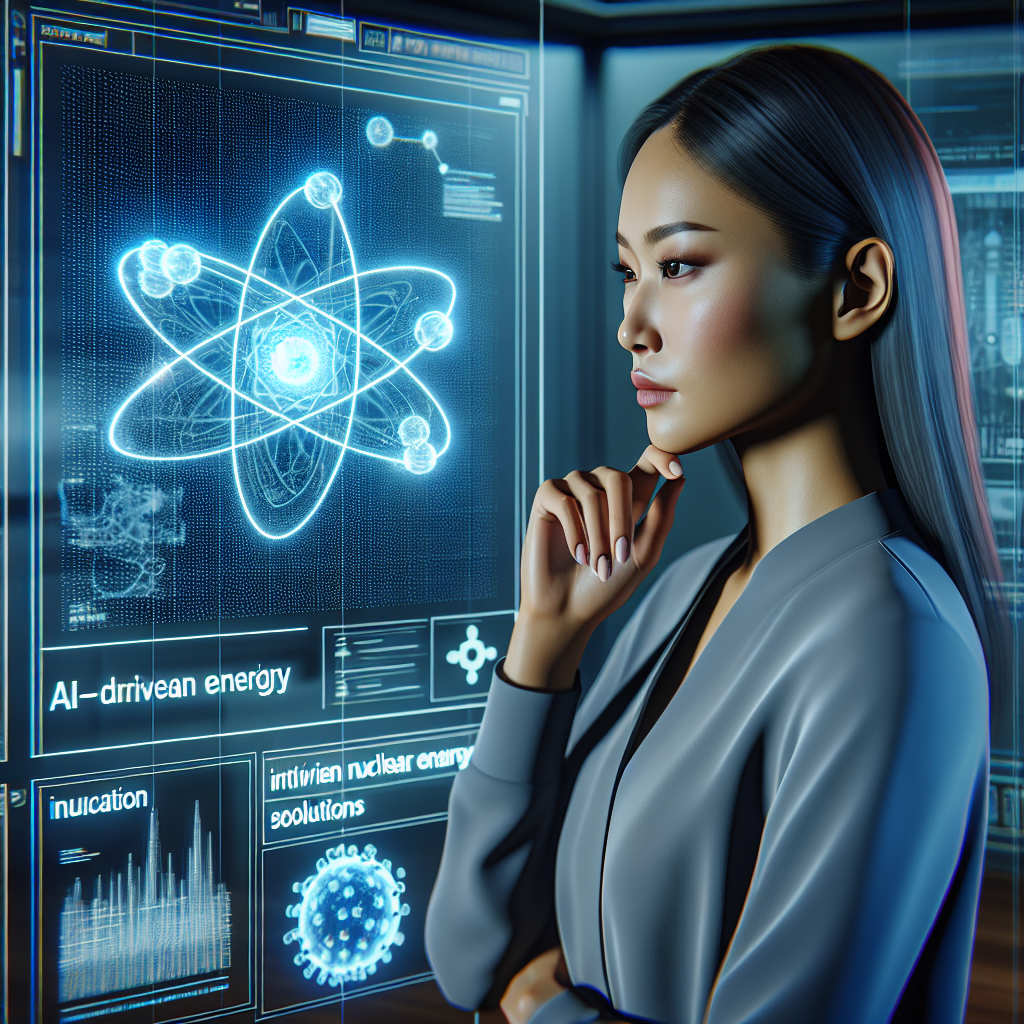In the rapidly evolving landscape of energy technology, the integration of artificial intelligence (AI) into nuclear energy solutions has sparked both excitement and skepticism. A prominent tech investor, known for his insightful critiques and forward-thinking approach, recently shared his views on the viability of AI-driven nuclear energy solutions. This article delves into the investor’s perspectives, exploring the potential benefits, challenges, and future prospects of this innovative technology.
The Promise of AI in Nuclear Energy
AI has the potential to revolutionize the nuclear energy sector by enhancing safety, efficiency, and operational predictability. Proponents argue that AI can optimize reactor design, improve maintenance schedules, and reduce the risk of accidents. For instance, AI algorithms can analyze vast amounts of data to predict equipment failures and identify potential issues before they become critical. This proactive approach can significantly enhance the safety and reliability of nuclear power plants.
Optimizing Reactor Design
One of the key areas where AI can make a substantial impact is in optimizing reactor design. By using machine learning algorithms, engineers can simulate and test various reactor configurations to identify the most efficient and safe designs. This not only speeds up the development process but also ensures that new reactors are built with the latest technological advancements. For example, AI can help in designing reactors that are more resistant to seismic activity, extreme weather conditions, and other environmental factors.
Enhancing Maintenance and Safety
Regular maintenance is crucial for the safe operation of nuclear reactors. AI can play a pivotal role in this area by analyzing real-time data from sensors and monitoring systems. By detecting patterns and anomalies, AI can predict when maintenance is needed, thereby reducing the likelihood of unexpected failures and costly downtime. Moreover, AI can assist in the development of more effective safety protocols by identifying potential risks and suggesting preventive measures.
The Skeptical Viewpoint
Despite the potential benefits, the tech investor raises several concerns about the viability of AI-driven nuclear energy solutions. These concerns span a range of issues, from technological limitations to ethical and regulatory challenges.
Technological Limitations
One of the primary concerns is the current limitations of AI technology. While AI has made significant strides in recent years, it is still not infallible. The investor points out that AI systems can be prone to errors, especially in complex and high-stakes environments like nuclear power plants. For example, a false positive in a predictive maintenance system could lead to unnecessary and costly repairs, while a false negative could result in a catastrophic failure. The investor emphasizes the need for robust testing and validation processes to ensure the reliability of AI-driven systems.
Ethical and Regulatory Challenges
Another significant concern is the ethical and regulatory challenges associated with AI in nuclear energy. The investor highlights the need for clear guidelines and regulations to govern the use of AI in this sensitive sector. Issues such as data privacy, algorithmic bias, and accountability are paramount. For instance, who is responsible if an AI system makes a decision that leads to an accident? The investor calls for a comprehensive legal framework to address these issues and ensure that AI is used responsibly and ethically.
Public Perception and Trust
Public perception and trust are also critical considerations. The investor notes that the public’s acceptance of AI in nuclear energy is crucial for the success of these solutions. However, there is often a lack of transparency and understanding regarding how AI works, which can lead to skepticism and resistance. The investor suggests that stakeholders, including tech companies, energy providers, and regulatory bodies, need to work together to educate the public and build trust. This can be achieved through transparent communication, community engagement, and clear demonstrations of the benefits and safeguards of AI-driven solutions.
Future Prospects and Recommendations
Despite the challenges, the investor believes that AI has the potential to significantly improve the nuclear energy sector. However, he emphasizes the need for a cautious and measured approach. The following recommendations are offered to maximize the benefits of AI while mitigating the risks:
- Invest in Research and Development: Continued investment in R&D is essential to overcome the current limitations of AI technology. This includes developing more advanced algorithms, improving data quality, and enhancing the robustness of AI systems.
- Strengthen Regulatory Frameworks: Clear and comprehensive regulations are needed to ensure the responsible and ethical use of AI in nuclear energy. This includes guidelines on data privacy, algorithmic transparency, and accountability.
- Enhance Public Engagement: Building public trust is crucial. Stakeholders should engage with the public through education and communication initiatives to address concerns and highlight the benefits of AI-driven solutions.
- Collaborate Across Industries: Collaboration between tech companies, energy providers, and regulatory bodies is essential to develop and implement effective AI-driven solutions. This can lead to more innovative and sustainable approaches to nuclear energy.
Conclusion
AI-driven nuclear energy solutions have the potential to transform the industry, but they also come with significant challenges. The tech investor’s critique provides valuable insights into the key concerns and future prospects of this technology. By addressing these challenges through continued research, robust regulations, and public engagement, the industry can harness the power of AI to create safer, more efficient, and more reliable nuclear energy solutions. As the industry moves forward, it is essential to strike a balance between innovation and responsibility, ensuring that AI is used to benefit both the environment and society as a whole.

